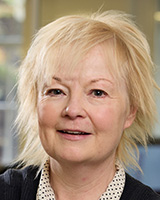Spectrum caps are the most widely used form of pro-competition measure used in 5G mid-band auctions, new study finds
LONDON, UK, 17 February 2022 | A new study by Analysys Mason, on behalf of TELUS, examines pro-competitive measures and coverage obligations that apply in different markets in 5G spectrum available in the 3400–4200MHz mid-bands.
TELUS asked Analysys Mason to compare how spectrum in the 3400–4200MHz range has been awarded in 24 high-income countries, which are all members of the Organisation for Economic Cooperation and Development (OECD).
The study finds the following.
- Spectrum caps are the most widely used form of pro-competitive measure in 5G mid-band auctions. Most OECD countries have used caps on total mid-band spectrum holdings (19 out of 22 of the countries using auctions to award mid-band spectrum have or will use spectrum caps). Where mid-band caps are used, caps were set at an average level of 108MHz in the benchmark countries, and permitted at least 100MHz per operator in all cases other than Australia and New Zealand (where limited spectrum was available to enable all players to obtain 100MHz). There are only six benchmark countries (including Canada) where no operator holds 100MHz.
- Canada is the only benchmark country to have used mid-band set-asides for public network operators. The study finds that Canada is the only benchmark country using mid-band set-asides for public network operators, previously in its 2021 auction of the 3500MHz band and potentially once again in its upcoming 3800MHz auction. Where set-asides have been used in mid-band auctions, these have generally been for the purpose of reserving a portion of spectrum for local, shared access use (for example, for private networks, akin to proposals for the 3900–3980MHz band in Canada), which is a materially different form of set-aside.
- There is a mixed picture on the use of mid-band coverage obligations, with 12 of the 24 countries examined applying some form of specific coverage obligation to the mid-band spectrum. However, there has been a clear trend towards the inclusion of coverage obligations or incentives in more recent mid-band auctions, as the band and use cases have been progressively better understood. The study describes that coverage obligations or incentives are an important component of a spectrum auction for ensuring that spectrum is deployed extensively and in an efficient manner.
- With relatively onerous coverage obligations, the final prices paid for 3500MHz spectrum in Canada were very high at six times the OECD benchmark average. With onerous coverage obligations, final prices paid for spectrum are typically lower. This should be factored into reserve prices that are to be set for the 3800MHz auction in Canada.
Commenting on the study, Mark Colville, Principal at Analysys Mason, said: “This study demonstrates the importance for the Canadian regulator to reflect the latest international best practice in its proposals for award of mid-band spectrum, including consideration of coverage incentives alongside or as an alternative to coverage obligations as a means of encouraging network investment, and spectrum caps as a way of ensuring optimal market-wide distribution of spectrum”.
If you are interested in finding out more about this topic, read Analysys Mason’s full report, Pro-competitive measures and coverage obligations in mid-band auctions.
About Analysys Mason
Analysys Mason is the world’s leading management consultancy focused on telecoms, media and technology (TMT), a critical enabler of economic, environmental and social transformation.
We bring together unparalleled commercial and technical understanding to deliver bespoke consultancy on strategy, transaction support, transformation, regulation and policy, further strengthened by globally respected research.
Our clients value our advice which combines deep domain knowledge with global reach and local insight into markets to help them achieve meaningful business results.
We are committed to our clients, employees and communities – contributing to a world where technology delivers for all.
Authors

Janette Stewart
Partner, expert in spectrum policy, pricing and valuation
